15 health buzzwords you need to know
Macros, activating, sprouting…ever wonder what health bloggers and Instagrammers are on about? Healthista’s Vicky Hadley breaks down 15 health buzzwords and shows you how to sound like you know what they mean
The wellbeing revolution is taking the UK by storm with new healthy restaurants opening every other day and more of us working fitness into our busy lives. So it’s no surprise that the vocabulary to describe the components of a healthy lifestyle has expanded too. If you already know your probiotics from your prebiotics and your kombucha from your sauerkraut then skip this bit (but how about activating? That was even new to us). For everyone else, here’s how to pronounce them, use them in a sentence and work them into your life.
1. MACROS
Short for? Macro-nutrients
Pronounced? ‘Mac-row-new-tree-ants’
What are they? Macro-nutrients are nutrients required to give us energy to keep our bodies functioning. The three macro-nutrients are fats, carbohydrates and proteins and by consuming the correct amount of macro-nutrients for your desired results, whether that is muscle gain, fat loss or toning up, you are more likely to achieve your bodily goals.
Macro-counting is a fairly simple method to allow you to calculate how to balance your diet. This is worked out via a ratio format, the basic ratio is 40 percent carbohydrates, 30 percent fat and 30 percent protein. However, when we work out our individual percentage to fit our bodily goals the ratios will change as we have to take our height, weight and desired goal into perspective.
How to use it? ‘I’ve eaten all of my macros today’
MORE:Â Are macro-nutrients the new calories?
2. PROBIOTIC
Pronounced? ‘PRO-BY-OT-ICK’
What are they? Probiotics are live bacteria and yeasts that are good for your health, especially your digestive system. Our bodies are full of bacteria which is both good and bad. However, probiotics are often called “good†or “helpful†bacteria because they help keep your gut healthy. Probiotics are already present in our bodies but by adding them in via a supplement or certain probiotic rich foods you can help ensure your body and gut stays healthy. Good bacteria in the gut have been linked with weight, mood, skin and digestion.
How to use it in a sentence? ‘I’ve started taking probiotics as I haven’t felt well lately’.
3. PREBIOTIC
Pronounced? ‘PREE-BY-OT-ICK’
What are they? Prebiotics are indigestible dietary fibres that we get from certain foods that when consumed help probiotics and good bacteria in the body grow. What happens when we eat prebiotics then? The prebiotics make their way towards our digestive tract, helping us break down foods more productively which improves our digestion. Prebiotics help aid the good bacteria present in the body, and when they are taken with probiotics they can ensure the gut remains completely healthy. Foods rich in prebiotics include onions, leeks, whole grains and bananas.
How to use it in a sentence? ‘I’m switching to whole grains as they have prebiotics within them’.
MORE:Â 6 hot health trends for 2016
4. FERMENTED
Pronounced? ‘FUR-MEN-TED’
What is it? Fermentation is a process that normally turns sugar to alcohol using yeast. However, fermented foods such as sauerkraut contain healthy bacterias naturally. The benefits of eating fermented foods include getting essential nutrients such as vitamin K2 and probiotics into the body and they’re much more potent sources of good bacteria than taking a pill. The probiotic aspect of fermented foods not only helps heal the gut and improve the digestive system but plays an important role at keeping our immune system healthy. Fermented foods include sauerkraut, pickles, miso soup and kimchi (you’ll find them later in our buzzwords list).
How to use it in a sentence? ‘I’m adding fermented foods to my diet because of the probiotic benefits’.
MORE:Â Can fermented foods change your life?
5. SAUERKRAUT
Pronounced: ‘SOUR-KRAT’
What is it? Sauerkraut is the result of a fermented cabbage that has been preserved in a sealed jar without oxygen over a set amount of time usually around four to six weeks. The cabbage is shredded and salt is added which works at pulling the water out of the cabbage to enable the fermenting process. Sauerkraut not only contains all of the benefits including cancer fighting properties that normal cabbage contains, but it also has live bacteria that helps the good bacteria in the gut flourish whilst simultaneously aiding digestion. It’s delicious added to salads or even soups.
How to use it in a sentence? ‘Why not add some sauerkraut to your meal to help the good bacteria in your gut?’
6. KIMCHI
Pronounced? ‘KIM-CHEE’
What is it? Kimchi is a Korean raw vegetable pickle that like sauerkraut has become naturally fermented in a puree of fruits, garlic, ginger and spices like chilli powder. It is also considered to be a ‘living’ food because of the probiotic benefits and live bacteria that help the gut. Kimchi is also considered to be a superfood that will provide our body with nutrients to aid our immune system, digestive system and health. By the way, although the taste is super-strong, it’s utterly delicious.
How to use it in a sentence? ‘I’m adding kimchi to my dinner to help me digest my dinner’.
MORE:Â Is fermenting the new juicing?
7. Â LIVE CULTURES
Pronounced: ‘LIE-V CULT-TURE-S’
What are they? Live cultures are sometimes used instead of the word ‘probiotic’. They are microorganisms found in foods such as yoghurt and probiotics. The main difference between live cultures and probiotics is that probiotics are live cultures, but live cultures are not always probiotic as although most live cultures do, not all live cultures contain good bacteria. An example of live cultures with good bacteria include Lactobacillus acidophilus and Lactobacillus bulgaricus.
How to use it in a sentence? ‘Go for the natural yoghurt as it has live cultures within it.’
8. GI
Pronounced? ‘GLY-CEE-MICK IN-DEX’
What is it? Glycemic Index (GI) is a scale that analyses how much a particular carbohydrate containing food will be digested into our bodies and how much it will effect our blood sugar levels. We ideally want to keep our GI low so by eating carbohydrates that are low on the glycemic index scale you can keep your blood sugar levels stable, and less likely to cause blood sugar spikes. Foods high on the glycemic index can lead to issues such as breakouts, low energy slumps, fatigue and low moods. Check the GI of any food here glycemicindex.com
How to use it in a sentence? ‘I’m going for quinoa instead of rice as it has a lower GI’.
9. GL
Short for? Glycemic load
Pronounced? ‘GLY-CEE-MICK LOW-DUH’
What is it? Glycemic load, similar to glycemic index is the measurement that allows us to tell how quickly the sugar in the carbohydrates we consume raise blood glucose levels. Foods with a glycemic load (GL) under ten are seen to be low-GL foods and have a small impact on raising your blood sugar levels. Whilst foods with a glycemic load of 20 or above are considered to be high-GL foods that tend to cause blood sugar spikes. The main difference between the glycemic load and the glycemic index is that the GI does not take into account the amount of carbohydrates in the particular food. So glycemic load is actually a better indicator on how the carbohydrate food will affect blood sugar. Find out the GL of common foods here.
How to use it in a sentence? ‘‘Don’t eat that cake, it has a really high on GL.â€
10. HIIT
Pronounced? ‘HIT’
What is it? HIIT is a type of training that involves changing up the tempo of your workout. High Intensity Interval Training is an excellent workout to help burn fat, improve endurance and toning. It isnormally practiced in between five and 30 minute long workouts, in which you train intensly for a period of time normally around 15 seconds then rest for 40 before repeating over the set amount of time.
How to use it in a sentence? ‘I’m going to do a HIIT workout at the gym today’.
MORE:Â Best gyms in London
MORE: HIIT workout with celebrity trainer Kathryn Freehand
11. TRX
Short for? Total Body Resistance Exercise
Pronounced? ‘TEE-ARE-EX’
What is it? TRX is a type of exercise workout that utilises your body weight and gravity. It was invented by Navy SEAL, Aaron Baldwin and is an excellent way of helping to develop balance, upper body and core strength as well as giving you an intense workout. Uses TRX suspension ropes we can perform numerous exercises with them including pull ups, press ups and more.
How to use it in a sentence? ‘I’m adding some TRX exercises into my fitness regime to boost my workout’.
12. KETTLE BELLS
Pronounced: ‘KETTLE-BELLS’
What are they? Kettle bells are iron balls with a handle attached to the top of them. It is a type of exercise equipment that can help you to build muscle and tone up whilst aiding fat loss. Many gyms have kettle bell classes which exercise plenty of the main muscle groups especially within the arms, legs and core. They’re easier to use for whole body exercise than dumbbells as they can be used singley or together.
How to use it in a sentence? ‘I’m joining the Kettle Bell class today’
13. QUINOA
Pronounced: ‘KEEN-OH-WAH’
What is it? Quinoa is a grain that looks very similar to couscous, however, is gluten free and filled with protein. Quinoa is a very highly rated carbohydrate in the health world because of the break down of its nutrition. Just one cup of quinoa contains eight grams of protein, five grams of fiber and many essential omega 3 fatty acids that balance hormones and boost the immune system. Quinoa is known as a complete protein, which means it provides all nine essential amino acids needed for good health. Our bodies are unable to produce these nutrients itself so we must get them through our diets. Amino acids work at building muscle, keeping our immune systems strong and overall our body healthy. Most grains such as wheat or rice are missing one or more of the essential amino acids which is why quinoa is such a great alternative.
How to use in a sentence? ‘If you avoid meat why not try quinoa because it is a complete protein’.
MORE:Â 10 surprising foods that contain gluten
MORE: The 5 new grains your diet needs now
14. SPROUTING
Pronounced: ‘SPROUT-ING’
What is it? Sprouting is the process of enabling seeds to grow. Sprouting similar to cooking, reduces anti-nutritional compounds in raw legumes meaning that we get the full nutritional benefits of the legumes. The most popular sprouted foods at the moment amongst the health world are sprouted grains such as quinoa, chia seeds and almonds. To sprout your grains, you simply leave them in water over a period of time which causes their outer layers to split open allowing a young shoot to blossom. When this happens, the newly emerging sprout takes some of the grain’s starches which changed the nutritional content of the food. Because there’s less starch in each sprouted grain, the protein and fibre measurements in the grains will become higher. Less starch means less carbohydrates so this means the sprouted grains will have a lower glycemic index too. Sprouting has many other benefits as well including boosting the foods level of vitamins and minerals.
How to use it in a sentence? ‘Try soaking the seeds in water as sprouting foods can help digestion’.
15. ACTIVATING
Pronounced: ‘ACTIVE-ATE-ING’
What is it? Activated almonds seem to be everywhere at the moment. Similar to sprouting, it works by putting nuts or seeds through a process of soaking and drying before eating them. The nutrients in the nuts and seeds are enhanced and easier for the body to absorb when they go through this process whilst still tasting exactly the same. The process of activating much like sporuting allows the body to digest the foods easier and helps us reap the full nutrients from the foods as it causes the essential minerals such as iron and zinc to become more avoailable for our bodies. In normal unactivated nuts, seeds and other plant based foods like quinoa a compound called phytic acid is present which binds to minerals such as zinc, iron, magnesium, calcium and chromium and can make it hard for our bodies to absorb these minerals and digest them properly. By soaking and activating the foods you can reduce the phytic acid in the foods aiding their digestion.
How to use it in a sentence? ‘Have you tried activating your almonds yet? They are so much better for you’.
MORE:Â 10 foods that give you energy
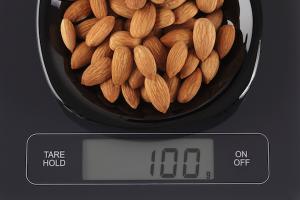


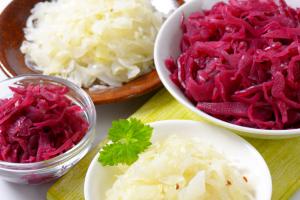
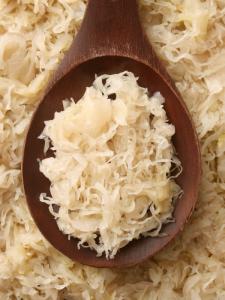


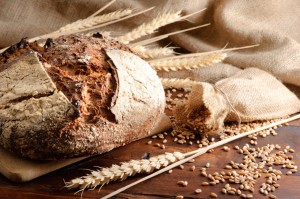
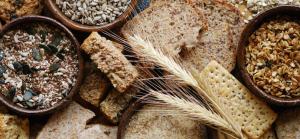



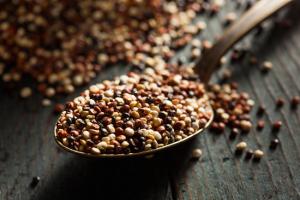
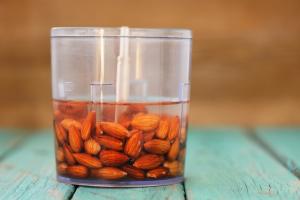
0 comments:
Post a Comment